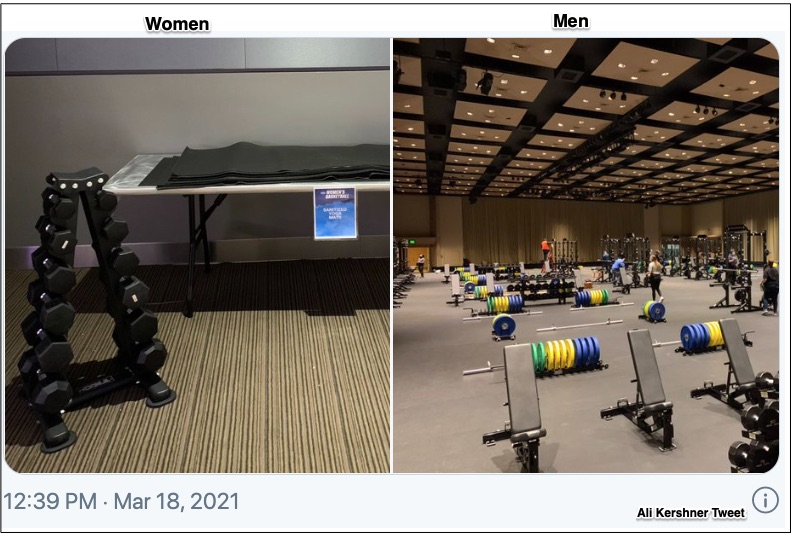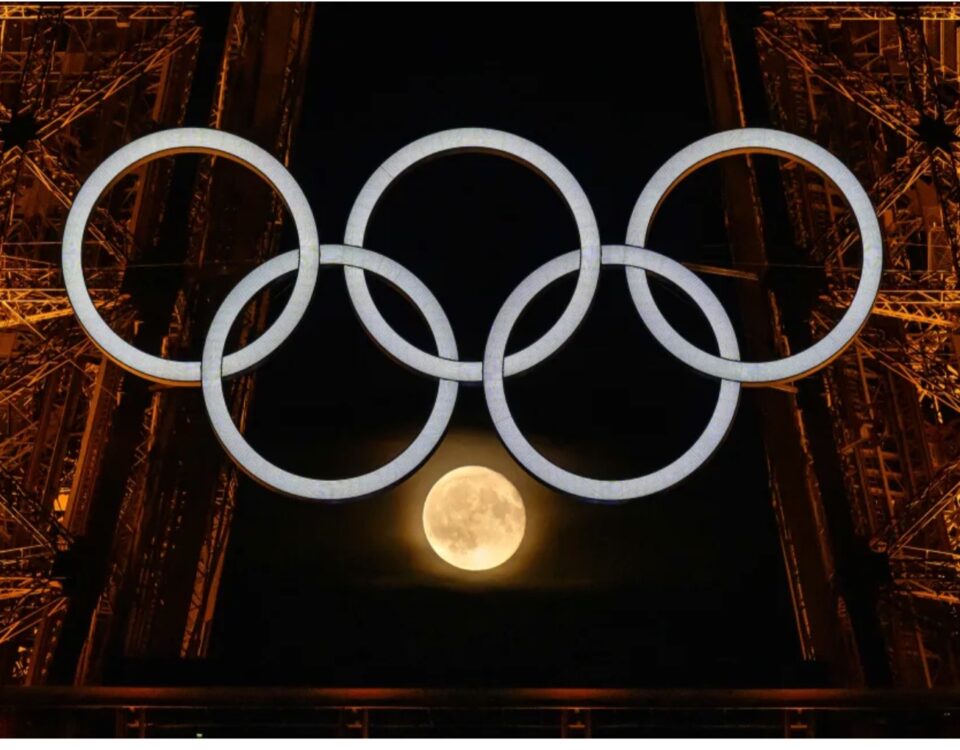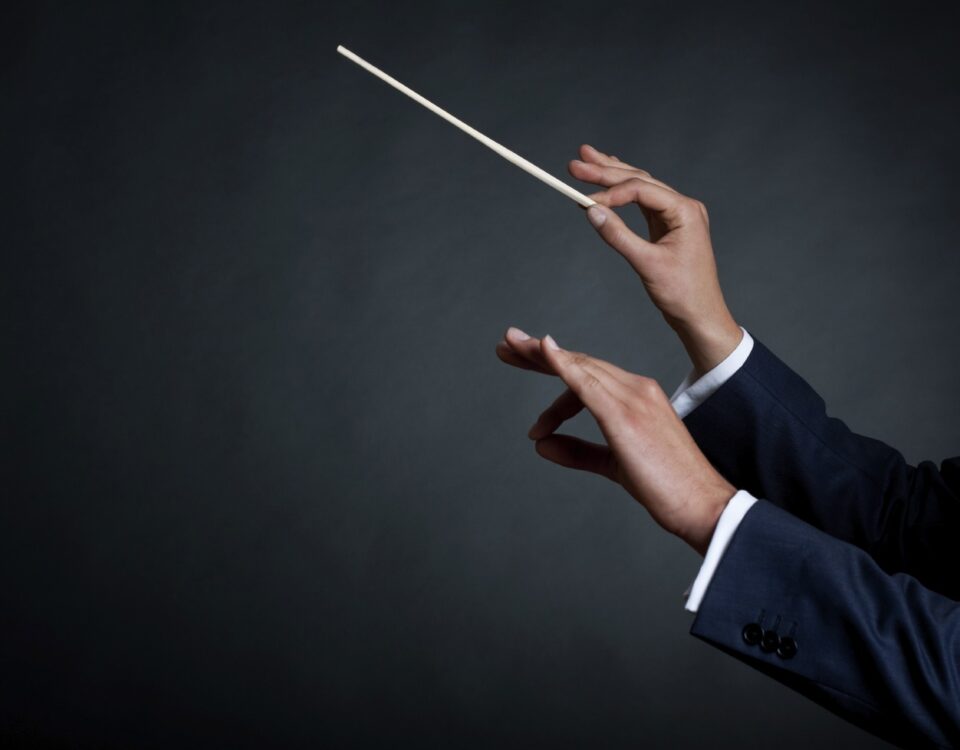
Why We Should Try Not To Expect Inflation
March 15, 2022
Why We Worry About the World’s Wheat
March 17, 2022Last August, a “scathing” 118 page report was published that detailed how the NCAA discriminates against women’s basketball.
Now that March Madness has begun, let’s look back at the inequities, at the report, and then ahead at what has (or has not) changed this year. The goal is to avoid the confirmation bias that perpetuates women’s secondary status.
March Madness Gender Equity
Discrimination
It all began with University of Oregon basketball player Sedona Prince’s viral TikTok. Her video included these weight room images:

While she complained about the weights, the discrimination was far larger.
The NCAA culture neglected the women. Whereas the NCAA invested in its men, it under-promoted the women. When the NCAA spent $53.2 million on the men and $17.9 million on its women in 2019, the women lost $2.8 million. However, the broadcast rights sold by the NCAA to ESPN guaranteed the women would attract less attention and revenue.
The NCAA Gender Equity Review
The report has the remedies. Concentrating on revenue distribution, broadcast rights, and participation opportunities, it suggests new policies. Broadcast auctions need to change, staff needs to be reallocated, priorities have to shift. Sports experts estimated that the women’s broadcast rights could be sold for $100 million in 2024 when the current deal expires. The tradition of corporate sponsors focusing on the men has to end.
2022: Where’s the Money?
The women now have equal swag bags, 68 teams instead of 64 and the March Madness branding that had been conspicuously absent. Unconfirmed, their budget has reputedly gone up by $5 million.
That’s it???
According to a letter from three Congresswomen, the NCAA response has been inadequate. “You have failed to take meaningful steps to correct deficiencies identified by the Committee and by an outside review, and you have failed to ensure gender equity across NCAA’s athletic programs.”
The task is dismantling the decades-old organizational structure and culture that perpetuated gender inequities. Including broadcast and corporate contracts and a revenue distribution model, the changes are massive. Like the old Wendy’s commercial that asks “Where’s the meat,” the women just need to ask “Where’s the money?”
Our Bottom Line: Confirmation Bias
When gender disparities reinforce themselves, an economist might say the reason is confirmation bias. With confirmation bias, an outcome is the result of what we expect. In a legendary primary school experiment, teachers predicted that blue-eyed children would be smarter, and they were. When they switched to brown eyes, so too did the brains. With athletics, we expect the women to generate less income and excitement so they do. If we believed the opposite, we would make it happen.
Although the NCAA said it was, “wholly committed to an equitable experience among its championships,” I suspect that their institutions and attitudes will create resistance. Happily, the numbers could nudge them in the right direction. More of us are watching the women’s title game while viewership of the major men’s game slipped. Between 2015 and 2021, the men’s game audience was down 40 percent (at 16.9 million) while the women were up 32 percent (4.1 million).
My sources and more: Combined, the NY Times, USA Today, Yahoo Sports, and the 114 page Gender Equity Review. say it all. But most of all, I recommend this congressional letter to the NCAA president. Also, this NCAA equity update demonstrates how little has been done. (Please note that today we included most of the last August’s post and an update on this year’s changes.)
![econlifelogotrademarkedwebsitelogo[1]](/wp-content/uploads/2024/05/econlifelogotrademarkedwebsitelogo1.png#100878)




